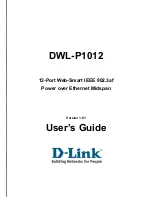
Premmia GX Series
25
Your computer complies with the guidelines of the Advanced Configuration and Power
Initiative (ACPI), which require that each component in or connected to your computer can
be managed by the computer and Windows. This affects both the resources each
component needs as well as how it uses power. The power management requirement is that
the component stops using power when it isn't being used, but can be ready to work as soon
as it's required. For example, the modem should not use power when it's not being used, but
as soon as the phone rings, it should pick up the call.
Most of this happens without you doing anything, but it is important that when you use
your computer with other devices, such as a modem or a printer, that these devices are also
ACPI-compliant; check with the manufacturer or in the user guide.
The Advanced Power Management (APM) specifications are older, less comprehensive
requirements for power management; your computer complies with APM 1.2.
The important thing to note about power management is that the components of your
computer manage the power they use without needing you to do anything. There is no
difference in performance between a computer that manages power and one that isn't, but
the power-managed computer will be cooler and use less energy.
Controlling Power Management
Power management in your computer can be controlled by the computer itself or by
Windows. If you are using Windows 98, you should let the operating system manage the
power, and not use the computer’s power management features. The computer’s power
management is controlled in Setup, where the default setting is to let Windows manage
power (see page 68 for more details).
Windows Power Management{ XE "Power management:Windows" }{
XE "Windows power management" }
To access the power management controls within Windows, open
My Computer
, then open
the
Control Panel
, then open
Power Management
. The Power Management Properties window
that is displayed lets you set time-outs for System standby, the hard drive and the monitor.
If the computer is inactive for the time set here, Windows puts the System into standby
mode, or tells the hard drive or monitor to go into a low-power mode.
Note that what Windows calls Standby mode is called Suspend mode in the following
section.
Содержание Premmia GX Series
Страница 1: ...User Guide Premmia GX Series ...
Страница 8: ...8 Premmia GX Series ...
Страница 11: ...Premmia GX Series 11 A B C D G F E ...
Страница 40: ...40 Premmia GX Series jumper ...
Страница 44: ...44 Premmia GX Series C D E B A ...
Страница 87: ...Premmia GX Series 87 ...
Страница 88: ...88 Premmia GX Series ...















































